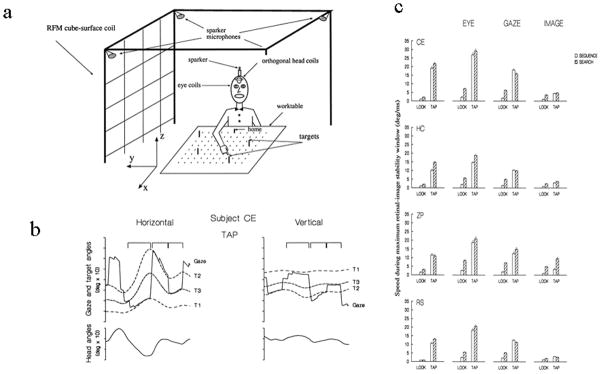Figure 10.
(a) Cartoon showing subject tapping a set of rods placed on a worktable. Rotations of head and eye are recorded by the revolving field monitor. Translations of the head are recorded by an acoustic tracking system. (b) Sample traces of gaze, 3 targets and head. Rotational motions of the target are produced by translations of the head, which occurred both during and between gaze shifts. (c) Average speeds of head, eye, gaze and retinal image during both tapping and looking-only tasks. “Search” refers to speeds before the locations of the tapped rods were learned; “sequence” after the locations were learned. From J. Epelboim (1998), Gaze and retinal-image-stability in two kinds of sequential looking tasks, Vision Research, 38, 3773–3784, Figs. 1, 3, and 5.

